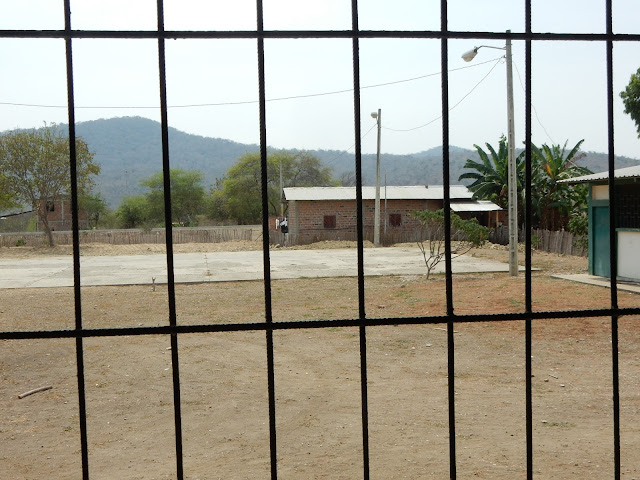Santo Domingo de los Colorados,
simply referred to as
Santo Domingo, is a city and seat of the
canton that bears its name.
It is the fourth most populous city in Ecuador with a population of
over 305,000, is an important commercial and industrial center, and
serves as the capital of the
Santo Domingo de los Tsáchilas Province.
 |
| We didn't see anyone with dyed faces but found | picture on internet |
History
The name, "de los Colorados", refers to a local ethnic group, the
Tsáchila, and the custom of men in that tribe to dye their hair with extract of the
achiote
plant; hence "Santo Dominigo de los Colorados" or "Santo Domingo of the
Dyed." This group, which is indigenous to the area, is recognised with a
substantial statue near the town center.
Geography
Santo Domingo is located approximately 133 km west of
Quito at an altitude of 625 m. Santo Domingo lies in the foothills west of the
Andes. It is important stopping point on the road from Quito to the
Pacific coast. The city also connects other lowland cities like
Quevedo,
Chone, and
Quinindé.
The city is also the seat of the
Roman Catholic Diocese of Santo Domingo de los Colorados.
Climate
Santo Domingo has a tropical monsoon climate under
Koppen classification (Am) with influences of altitude. Average temperatures hover around 71 degrees Fahrenheit.
[4] Like many other cities on this side of the
Andes it floods easily. Roads between
Quito and coastal cities such as
Esmeraldas and
Manta are often washed out and require frequent work.
 |
| We went to Santo Domingo last Wednesday. The road was very windy but really pretty. Lots of green fields and a few waterfalls. We went to a school where we donated some used church computers. |
 |
| Director of the school with the Stake and ward relief society presidents who accompanied us to the school. |
 |
| Restroom facilities. |
 |
| View of the school! |
 |
| Cute young ladies who wanted their picture taken! They also wanted to try and speak English to us. |
 |
| Classroom for the little children. |
 |
| Small daycare center for babies to the age of 4. You can see all the playground equipment. Just old tires buried in the ground. Inside there wasn't anything just a bare concrete floor. Mothers took turns tending the young children. |
 |
| Edge of the playground! Sheer drop off to the stream below. They needed a fence. |
 |
| Road back up from the daycare center. |
 |
| Medical facility that we visited. We talked with director and staff to determine needs and if the Church could help them. |
 |
| The church had previously donated benches to the clinic. |
 |
| They requested exercise equipment for expectant mothers to use at the clinic. Currently all they have is the ball and it's pretty flat! |
 |
| We didn't find anything interesting that we could pursue as a project and we were getting a bit discouraged but miraculously our driver said that his daughter in Quito worked for the central ministry of education. He got us the name and number of the provincial director from his daughter and we were able to find the location. We visited with the director who was very nice and hopefully we will be able to develop a project to help poor schools in the province. |
















































